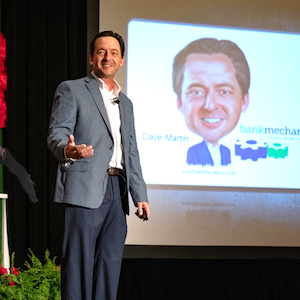 |
 |
The two most important days of your life are the day you are born, and the day you find out why. » Mark Twain
A Deep Bench
While watching the San Antonio Spurs on TV recently, I saw a guy nailing three-point shots that had me reaching for the DVR remote.
I replayed the shots and told my son, “Hey… that’s you.”
Matt Bonner has a non-textbook shooting motion. He sort of holds the ball above his right shoulder and releases it from a different spot than most.
The reason it sticks out to me is it is the same form I’ve given up trying to break my 14-year-old of.
After hours in our backyard and in local gyms, and realizing that his percentages are as good as the guys around him, I eventually accepted that an unconventional form works for him.
A few days after the game we watched, I read a column by J.A. Adande that got me smiling. He talks about interviewing Bonner and a few other “role players” in the Spurs locker room.
While most of the reporters congregate around the star players, games are often won or lost by how effective guys in the “supporting cast” are in their jobs.
After this particular game, Adande noted that his fellow reporters flocked around Tim Duncan’s locker, even though Bonner had scored twice as many points as Duncan in that game.
What struck me was that Bonner and his fellow role players eagerly accept playing their supporting roles. And it’s worth noting that there likely isn’t a player on any NBA bench who wasn’t the star of every team he played on since 5th grade.
Bonner explains that he seldom knows when or how much he’ll play. It may be early in the game or in crunch time. He may play 1 minute or 30 minutes.
Being mentally and physically prepared to be thrown into a game and perform instantly is, in itself, an elite skill. Most starters need to “play themselves” into the flow of a game.
He coined the term “arrhythmic nature” to describe his playing time. He says he forces himself to alter his practice routines every day to keep himself from preparing for a work environment that doesn’t exist for him.
He’ll take extra time to sit and cool off during shooting practice to simulate coming off the bench. His skill is being instantly ready when called upon.
Many of us have aspirations of higher profile jobs in the future. And that’s great. But most of us have been entrusted with important jobs that others are depending on us to do well right now.
How hard are you working to be especially great at yours?
Who Are You?
A recent column by Dan Geller of Market Rates Insight shared survey results of banking channel preferences by age group.
He makes the hopefully obvious but valid point that banks shouldn’t expect that there is a one-size-fits-all solution to channel optimization.
MRI’s survey shows results that seem both predictable and yet startling at the same time. They found that only 24% of consumers between the ages of 18 and 35 (Gen Y) indicate that a branch is their preferred banking method.
That number is almost identical for the next older group between 36 and 46 years of age (Gen X) at 25%.
I believe Mr. Geller attempts to throw the hardcore branch champions a bone when he suggests that the numbers are “conversely” higher for older demographics.
Thirty-one percent of Baby Boomers between 47 and 66 prefer branch banking, and 38% of consumers over 67 prefer the branch channel.
Maybe my take on things is a bit different, but the headline in that data to me is “Even 62% of senior citizens prefer banking away from a branch!”
Historically, these are the kinds of findings that many in our industry read, accept, and then try to ignore.
Some folks are at their most motivated and creative when justifying the status quo.
But it’s a safe bet that the historic role of bank branch-as-factory - where the counting, sorting, recording, and safekeeping of paper was done – is ending. Branch transaction volume is decreasing, and there is no turning back.
All that said, I’d argue that while face-to-face interactions with customers are becoming fewer and farther in between, they are actually becoming more important. Sure, customers increasingly prefer to handle their banking on-line, at ATM’s, and via mobile devices.
But there is a bit of a distinction between the most frequent kinds of transactions and the most influential kinds of transactions.
Simply, one face-to-face interaction or even phone conversation will do as much or more to define you in a customer’s mind than dozens of electronic transactions.
Online banking transactions may increasingly be what your bank does for customers. But personal interactions show customers who you are.
And in a commoditized industry, that matters… a lot.
What are you showing customers today?









